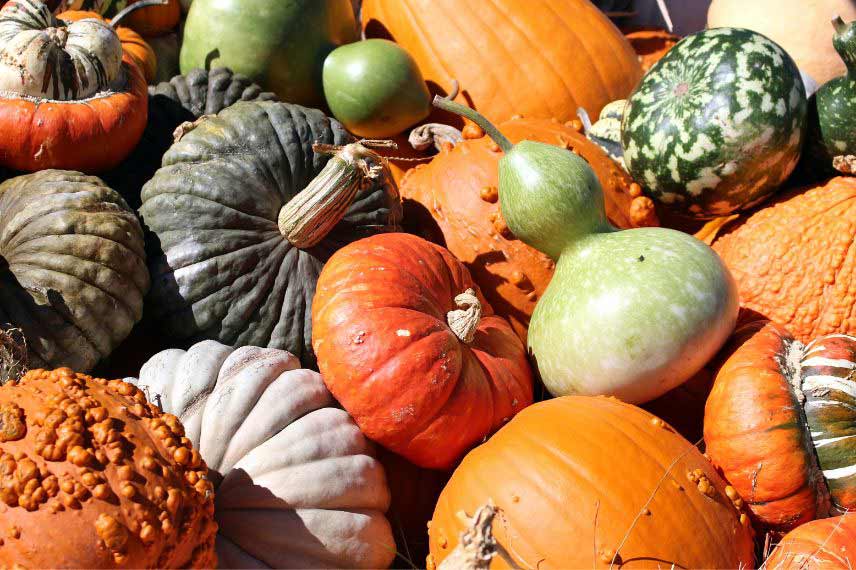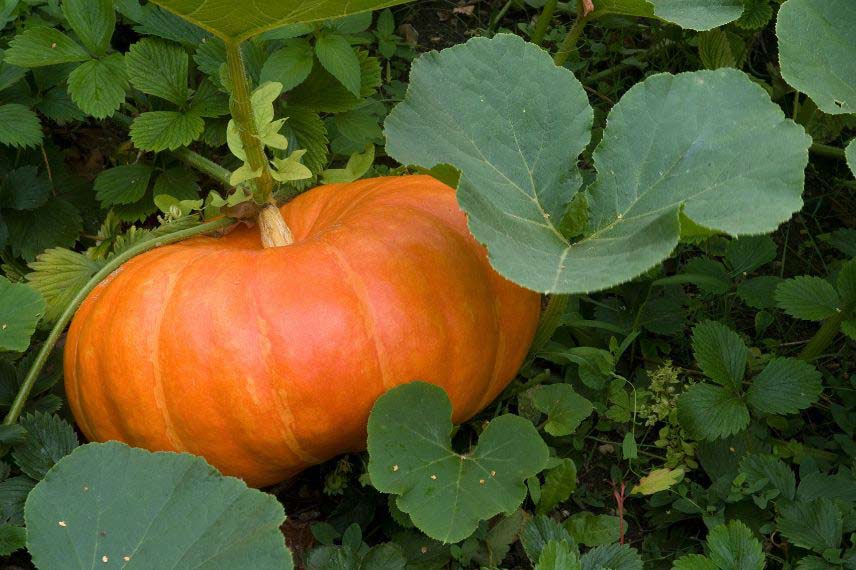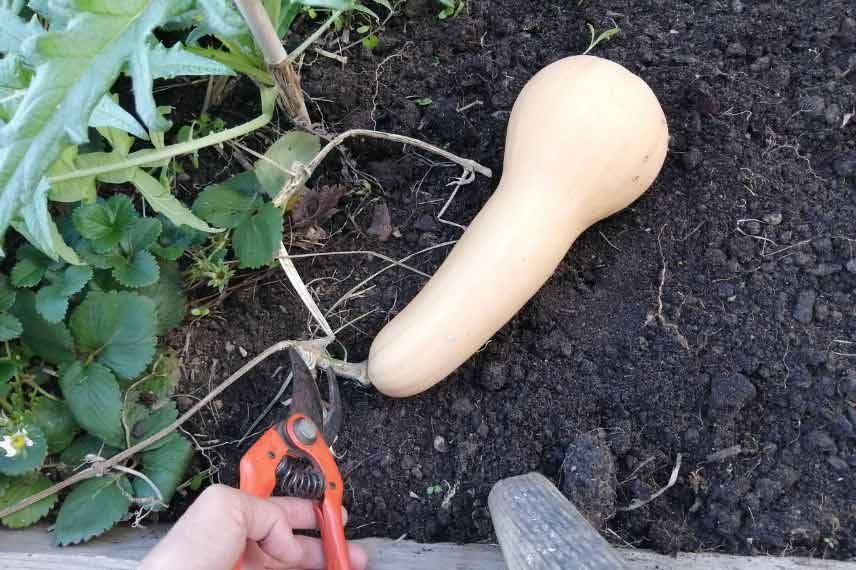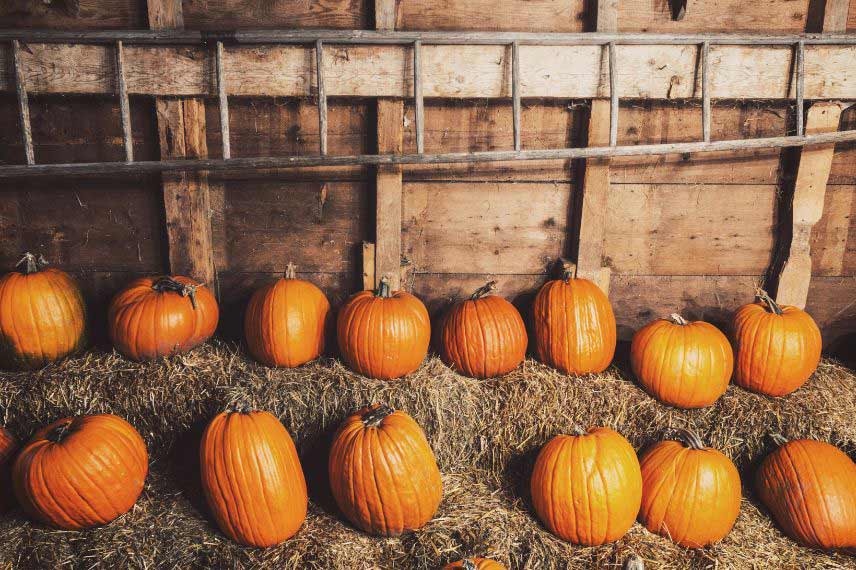They are the stars of autumn: pumpkin, squash, butternut and other gourds jostle for space on greengrocers' stalls and in the vegetable garden, it's time to harvest them. When and how to pick squashes, where to store them for the coming months? We tell you all about harvesting and storing cucurbits!

When to harvest squashes?
Squashes should be harvested before the first autumn frosts to avoid damaging the fruits. This allows them to be stored for winter.
You'll know it's time to harvest squashes when the peduncle (the small part connecting the squash to the stem) has begun to lignify, meaning it has hardened and the fruit is ready to detach itself. Additionally, squashes have reached ripeness when they've changed colour from green to their final hue: orange-pink for Butternut squashes, bright orange for giant pumpkins, bright yellow for Spaghetti Squashes, or even bluish for Hungarian Blue Pumpkins.
If some of your garden squashes still have tender peduncles, let them ripen by placing a small board, tile or thick mulch underneath to isolate them from ground moisture, while keeping an eye out for frosts.
Similarly, if some are damaged and at risk of rotting, harvest them without delay - they can finish ripening indoors.

How to harvest squashes?
When harvesting, cut the squash stems with secateurs while keeping the peduncle entire, as this actually improves storage. Avoid carrying them by the peduncle and handle them carefully to ensure they remain free from any nicks or bumps.
You can let them dry in the sun on dry soil for 1-2 days. If weather doesn't permit this, bring them under cover immediately.
Optionally brush your squashes carefully under a filament of water or wipe them with a dry cloth to remove any traces of soil if they're maculate, and to rid them of small insects. Then dry them to improve their storage life.

Cut each squash stem while keeping the peduncle entire
Where and how to store squashes?
Unlike other fruits and vegetables, squashes tolerate room temperature very well, but their ideal storage temperature is around 15°C. Best is to store them in an outbuilding like a clean garage or shed, well-ventilated and frost-free. Darkness isn't necessary for their storage.
Place them on boards, shelves, pallets or very dry straw, ensuring they don't touch each other. Also avoid stacking them.
Once stored, check periodically that your squashes aren't rotting, remembering to turn them gently. If one shows signs of mould, quickly remove the affected squash before it contaminates others. If a squash starts to rot, cook it promptly simply removing the affected part - the remaining firm portion is still edible.

Store squashes spaced a few centimetres apart
How long can squashes be stored?
All squash varieties can be stored entire for several months and eaten throughout winter.
To go further
- Discover or rediscover all our Squash varieties
- To learn everything, read our article on squashes: sowing, planting, growing, harvesting



































Comments